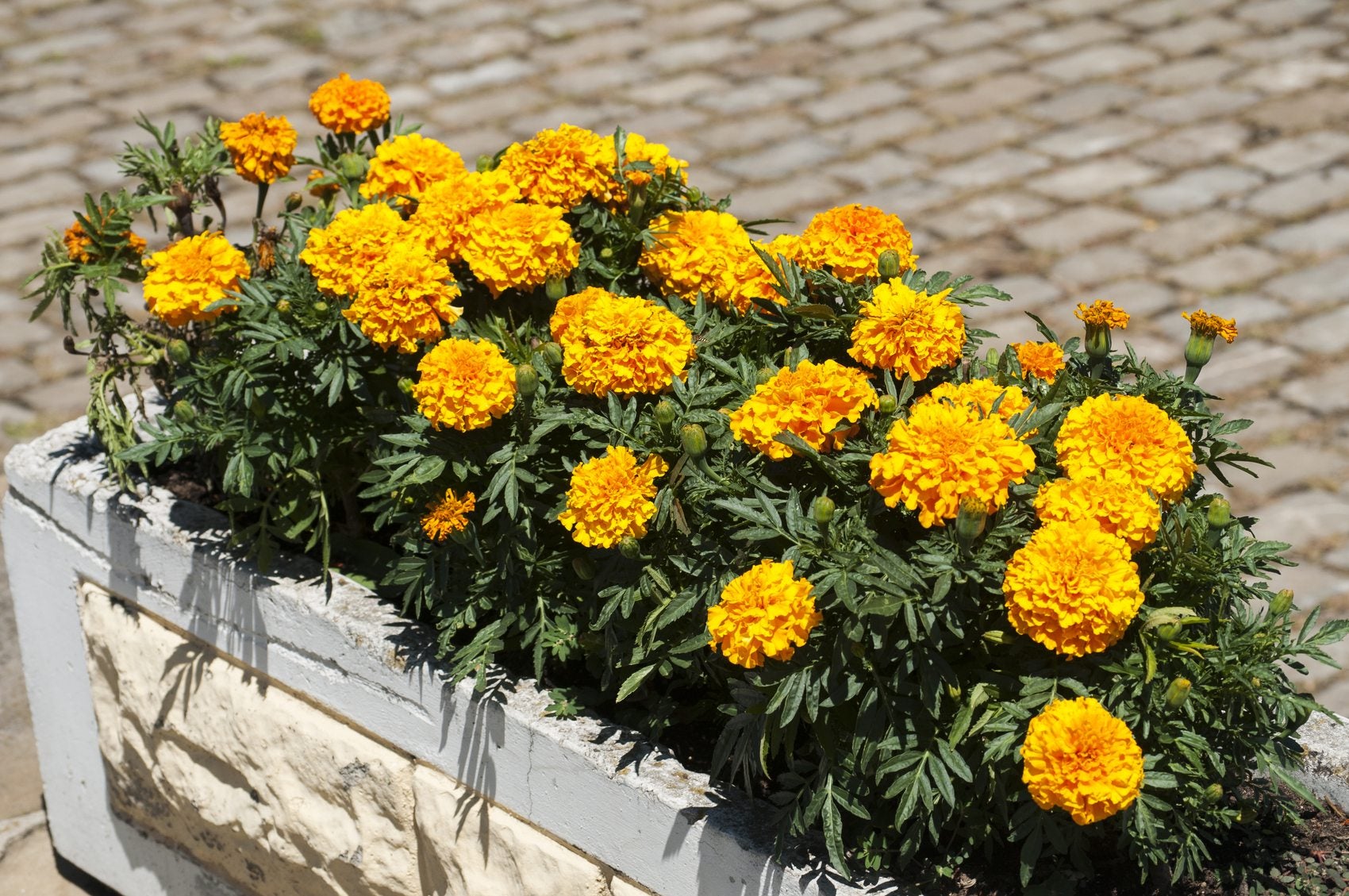Caring For Marigolds In Pots – Tips On Growing Marigolds In Containers


Marigolds are easygoing plants that bloom reliably, even in direct sunlight, punishing heat and poor to average soil. Although they are beautiful in the ground, growing marigolds in containers is a surefire way to enjoy this delightful plant. Read on to learn how to grow marigolds in containers.
Potted Marigold Plants
Any type of marigold can be grown in containers, but keep in mind that some types, such as African marigolds, can reach heights of up to 3 feet (1 m.) and may be too large for standard containers. Most gardeners like to plant smaller container grown marigolds. For example, French marigolds are small, bushy plants that reach heights of only 6 to 18 inches (15 to 20 cm.), depending on the variety. They are available in orange, yellow, mahogany or bicolor, and in double or single blooms. Signet marigolds are another good choice for potted marigold plants. The bushy plants have attractive, lacy foliage and orange, yellow or rusty red blooms.
Caring for Marigolds in Pots
Don’t crowd potted marigold plants, as healthy marigolds require plenty of air circulation. One marigold is enough for a 6-inch (15 cm.) pot, but you can grow two or three in a 12-inch (30 cm.) pot, and five or more small plants in a large container with a diameter of 18 inches (45 cm.). Be sure the container has a drainage hole in the bottom. Use a good quality, lightweight potting mix. A handful of sand, perlite or vermiculite improves drainage. Place the pot where the marigold is exposed to at least six hours of sunlight. Water the marigold when the top 1 to 2 inches (2.5 to 5 cm.) of soil is dry. Water deeply, then let the soil dry before watering again. Never allow the soil to remain soggy, as wet conditions invite root rot and other moisture-related diseases. Pinch the tips of newly planted marigolds once or twice to encourage bushy plants. Deadhead the plants regularly to trigger new blooms. Apply a water-soluble fertilizer every month, but don’t over-fertilize. Too much fertilizer or overly rich soil can produce weak plants with few blooms.
Sign up for the Gardening Know How newsletter today and receive a free copy of our e-book "How to Grow Delicious Tomatoes".

A Credentialed Garden Writer, Mary H. Dyer was with Gardening Know How in the very beginning, publishing articles as early as 2007.